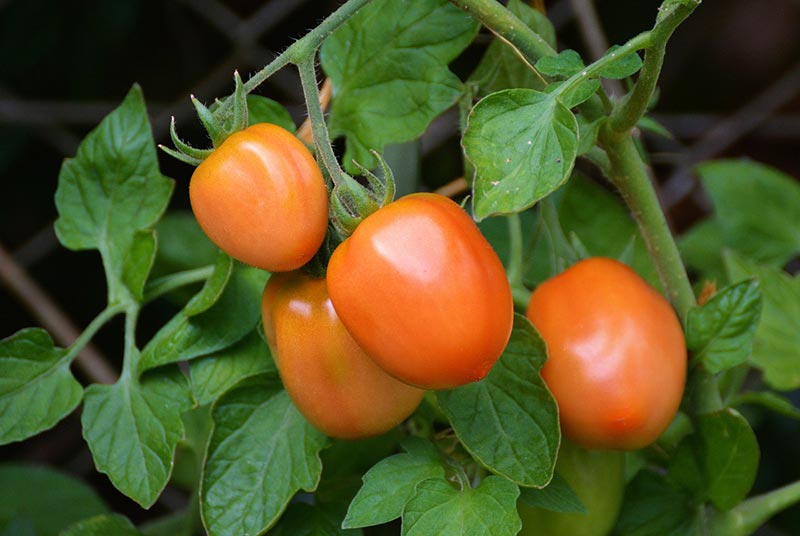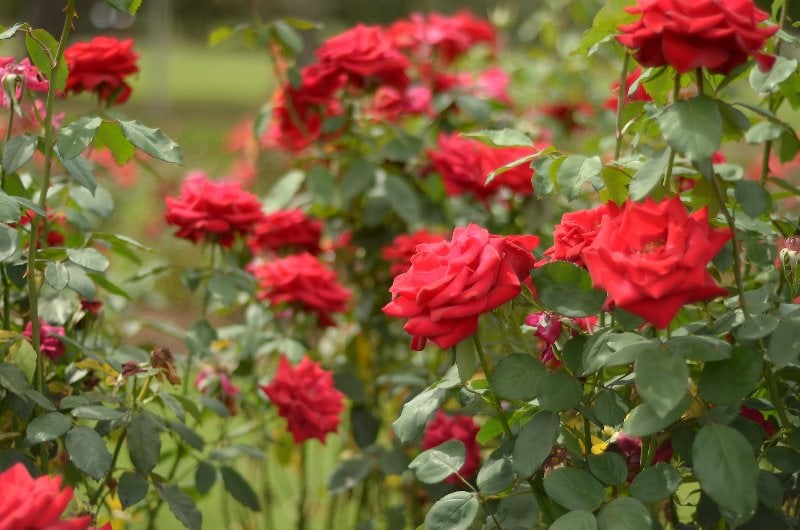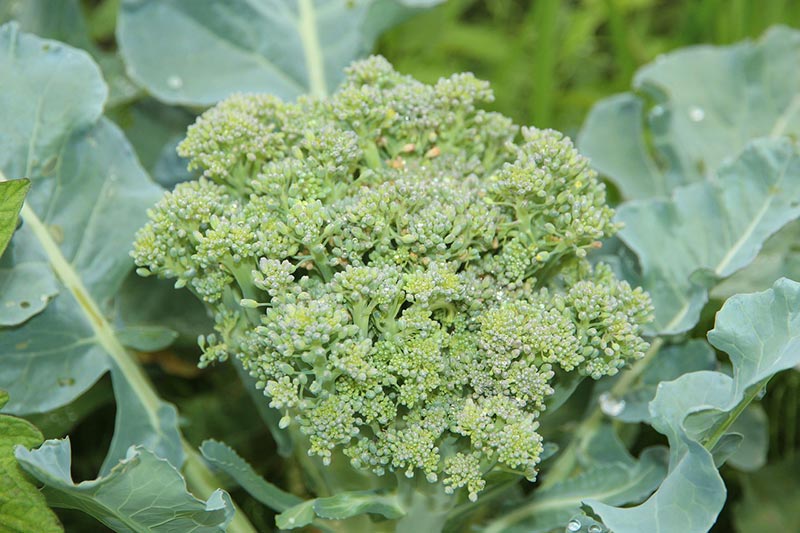10 Companion Plants for Parsley (with Pictures)
-
Jana Blagojevic
- Last updated:

Companion planting is a practice of planting and cultivating two plants near each other, allowing them to benefit from one another. Each plant has unique features that can improve or worsen the growth of the second plant. That is why when growing parsley, it is essential to know which plants go great with parsley and which plants can affect it negatively. Since parsley is easy to grow and maintain, finding a perfect companion plant shouldn’t be an issue.
Below, you can find some of the best companion plants for parsley to choose from for a healthy and thriving garden.
The 10 Great Companion Plants for Parsley
1. Tomatoes

| Botanical Name: | Solanum lycopersicum |
| Sun Requirements: | Full sunlight, at least 8 hours of exposure daily |
| Soil Type: | Well-drained, slightly acidic soil |
Tomatoes are one of the best companion plants for parsley. Together they keep certain insects at bay. When planting tomatoes near parsley, it is essential to research which tomato species are best for companion planting. Companion planting these two plants will bring significant benefits to your garden, especially to your tomatoes which are prone to aphid infestations.
Parsley attracts hoverflies, effectively attacking aphids and reducing their risk of spreading through the garden.
2. Asparagus

| Botanical Name: | Asparagus officinalis |
| Sun Requirements: | Full sunlight, at least 8 hours of exposure daily |
| Soil Type: | Sandy, well-drained soil, neutral or slightly acidic |
Asparagus is another vegetable that brings excellent benefits when planted near parsley. These two plants help each other grow and become healthier. Parsley is perfect for asparagus because it keeps beetles away from this vegetable. Since asparagus doesn’t bloom, the best way to incorporate parsley into the garden is to plant it in between rows of asparagus each year.
When it’s time to harvest asparagus, it will be free of beetles, and you will be able to harvest parsley along with it!
3. Pears

| Botanical Name: | Pyrus |
| Sun Requirements: | Full sun |
| Soil Type: | Fertile, moist, but well-drained soil |
Parsley attracts certain predators that benefit the garden because they attack pests and keep the balance of good and harmful insects. Pears are often prone to codling moths infesting the tree. These pests destroy the leaves, which is why planting parsley nearby is a helpful method for reducing the risk of problems.
Parsley is excellent at attracting braconid wasps, which attack these destructive moths and keep them away from pears.
4. Chives

| Botanical Name: | Allium schoenoprasum |
| Sun Requirements: | Direct sunlight, 6 to 8 hours daily |
| Soil Type: | Rich, well-drained soil, neutral and slightly acidic |
Chives are a species of flowering plants with edible flowers and leaves belonging to the Allium family. While other Allium family members, such as garlic or onion, may not be suitable companion plants for parsley, chives can significantly improve the quality of the parsley’s growth. Parsley attracts many pollinators and beneficial insects in the spring that keep harmful and destructive pests away from chives.
5. Roses

| Botanical Name: | Rosa |
| Sun Requirements: | At least 4 hours of direct sun exposure daily |
| Soil Type: | Loamy, well-drained soil |
Roses are lovely flowers, symbolizing love and peace, and can improve the appearance of any garden. While roses have a unique appeal, they are prone to sawflies which can drastically destroy their appearance. Insects such as hoverflies and tachinid flies are attracted to parsley, and if they spot sawflies nearby, they will attack them and feed on them.
Planting parsley near roses can significantly reduce the risks of pests and harmful insects by attracting certain beneficial predators.
6. Beans

| Botanical Name: | Phaseolus vulgaris |
| Sun Requirements: | Full sunlight, at least 8 hours of exposure daily |
| Soil Type: | Loose, well-drained soil, rich in organic matter |
Beans are another vegetable that is prone to frequent pest attacks. Because beans are susceptible to weevils, aphids, and cutworms, planting parsley can help reduce this problem greatly. Insects like tachinid flies, which are attracted by parsley, can reduce the population of other harmful insects, keeping this problem at bay. If you want to maintain healthy beans, using parsley as a companion plant will help you achieve this goal.
7. Corn

| Botanical Name: | Zea mays |
| Sun Requirements: | 6 to 8 hours of sun exposure daily |
| Soil Type: | Loamy, well-drained soil |
Corn is prone to be attacked by armyworms which can destroy your crop if not appropriately handled. For this reason, planting parsley will help your corn stay strong and fight off any detrimental insects that would otherwise ruin your entire crop. Since parsley is one the best insect repellants in the garden, it will also benefit corn when planted nearby.
8. Brassicas

| Botanical Name: | Brassica |
| Sun Requirements: | Full sun or light shade |
| Soil Type: | A loamy, sandy, moist, but well-draining soil |
If you are a garden lover, you are probably aware of the troubles of keeping Brassica plants pest free. The most frequent problem that attacks these plants is cabbage worms and cutworms, which can significantly destroy your plants’ leaves. Parsley does an excellent job at attracting insect predators that feed on the pests that may attack brassicas. Parsley and Brassicas will grow much healthier if they are planted together.
9. Apples

| Botanical Name: | Malus domestica |
| Sun Requirements: | Full sunlight, at least 8 hours of exposure daily |
| Soil Type: | Well-drained, slightly acidic to neutral soil |
Apples and pears suffer from similar pests; therefore, parsley can also benefit apples when planted as a companion. The major problem for apples is codling moths and gypsy moths which can quickly destroy the leaves of your apple trees. If this problem is left unresolved, your apple tree can become withered. That’s why parsley can be very efficient as a companion plant for apples because it will keep many pests, including codling and gypsy moths, away.
10. Peppers

| Botanical Name: | Piper |
| Sun Requirements: | 6 to 8 hours of sun exposure daily |
| Soil Type: | Moist, well-drained, slightly acidic to neutral soil |
While the fragrance of peppers is excellent at repelling most larger pests such as deer and rabbits, insects are still largely immune to the pepper’s scent. Pests such as aphids and beetles will be a frequent problem for peppers so a natural solution can come in handy. Beneficial predators that are attracted by parsley in spring can additionally help peppers fight off any insects.
The Worst Companion Plants for Parsley
While you can plant many plants safely near parsley and expect them to improve each other’s health, some plants can affect parsley negatively. That is why it is essential to know which plants to avoid near parsley and maintain a healthy and thriving garden.
- Lettuce: Planting lettuce near parsley is not a wise idea because parsley can cause the lettuce seed to fertilize earlier than its germination period. Parsley also attracts insects that can harm lettuce by reducing its growth.
- Carrots: Since carrots belong to the same family as parsley, they can quickly become competitors fighting for nutrients. These two plants have common enemies—carrot—flies, which they won’t be able to fight off.
- Mint: Since mint is an invasive plant, it can spread its roots aggressively and interrupt the growth of parsley.
- Alliums: Planting alliums such as onions and garlic near parsley can slow down the plant’s growth, so it would be wise to keep these two plants far from each other.
Conclusion
Hopefully, this article has helped you maintain a healthy garden through companion planting. Parsley is an excellent plant to grow in your garden since it doesn’t require too much maintenance and attracts many beneficial insects that keep pests at bay.
Featured Image Credit: gulzer, Pixabay
Contents
